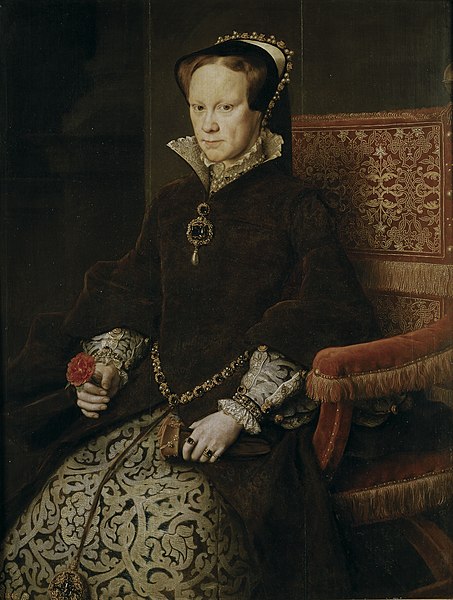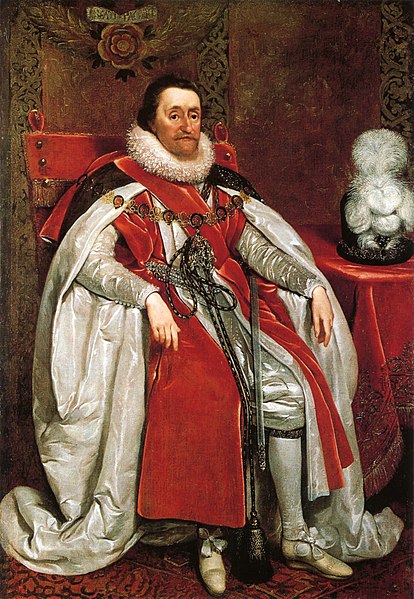Queen Elizabeth I, the Virgin Queen, Gloriana, Good Queen Bess, daughter of Henry VIII & his second wife, Anne Boleyn, was the last of the Tudors, and died on this day 24th March, 1603. One of the greatest queens in English history, Elizabeth had come to the throne aged twenty-five, following a dangerous and challenging upbringing.
How could a princess have a challenging upbringing, some may ask? Her mother, once the great love of Henry VIII’s life, had lost her power over the fickle king, and in one of the most infamous stories in history, was beheaded on trumped-up charges which included adultery with several men, including her brother.

Queen Elizabeth I by Unknown artist, oil on panel, early 17th century with 18th century overpainting. Image: The National Portrait Gallery, London.
Whether Anne had been a scheming temptress or a woman ahead of her time, thwarted by the madness of a king obsessed with having a male heir, her fate was sealed one May morning in 1536 – two and a half years after she had given birth to Princess Elizabeth, when she was beheaded on Tower Green at the Tower of London. Elizabeth was rendered illegitimate – like her sister, Princess Mary, had been before her. Mary was Henry’s only surviving child with his first wife, the Spanish Princess Catherine of Aragon. Mary, like Catherine, was a devout Catholic, and this would figure in greatly in the lives of both princesses, and the people they eventually ruled over.

Anne Boleyn, Queen Elizabeth’s mother. “Anna Bolina,” by Unknown artist, oil on panel, late 16th century (circa 1533-1536). Image: The National Portrait Gallery, London.
Henry’s obsession with a male heir seemed concluded when wife Number Three, Jane Seymour, gave birth to Edward. After Henry’s death, Edward was next in line to the throne, but as he was too young his uncle, Edward Seymour, Duke of Somerset, took over as Lord Protector. Seymour was eventually beheaded, and young King Edward VI took over.

King Henry VIII, Queen Elizabeth’s father. King Henry VIII after Unknown artist, oil on panel, perhaps early 17th century (circa 1542). Image: The National Portrait Gallery, London.
His reign was short-lived, for he died aged only fifteen years old. His eldest sister, the Catholic Mary was to succeed him, but Edward had left the throne to his cousin, Lady Jane, who became known as the Nine Days Queen. She was eventually sent to the Tower when Mary took her throne, and was beheaded, again another teenager.
Once upon the throne, Queen Mary I married Phillip II of Spain and was completely in love with him. They did not have children, though it seemed that Mary had symptoms consistent with pregnancy. Mary died painfully, aged 42, from what is thought to be cancer.
Elizabeth came to the throne and Elizabeth was extremely well-educated, speaking several languages fluently. When I was about eight years old, I was given a copy of Christopher Hibbert’s The Virgin Queen, which moved me deeply, for I yearned to be as erudite as she had been. This was one of my favourite poems when I was a teenager, it is called “On Monsieur’s Departure”:
I grieve and dare not show my discontent;
I love, and yet am forced to seem to hate;
I do, yet dare not say I ever meant;
I seem stark mute, but inwardly do prate.
I am, and not; I freeze and yet am burned,
Since from myself another self I turned.My care is like my shadow in the sun—
Follows me flying, flies when I pursue it,
Stands, and lies by me, doth what I have done;
His too familiar care doth make me rue it.
No means I find to rid him from my breast,
Till by the end of things it be supprest.Some gentler passion slide into my mind,
For I am soft, and made of melting snow;
Or be more cruel, Love, and so be kind.
Let me or float or sink, be high or low;
Or let me live with some more sweet content,
Or die, and so forget what love e’er meant.
Elizabeth never married. Some say she had been psychologically damaged from her mother’s treatment at the hands of her father. Some more preposterous theories say that she had been malformed due to congenital syphilis and was incapable of having children, others…that she was a man! Perhaps she just didn’t find someone she could trust enough to marry?

Queen Elizabeth I, attributed to George Gower, oil on panel, circa 1588. Image: The National Portrait Gallery, London.
Whilst her mother, Anne Boleyn, was buried in the the Chapel Royal of St. Peter ad Vincula inside the Tower of London, and her father beside his third wife, Jane Seymour, at St. George’s Chapel at Windsor Castle, Queen Elizabeth was interred in Westminster Abbey, where she rests beside the remains of her sister, Mary.
As she had no heirs of her body, she chose James VI of Scotland, the only son of Mary, Queen of Scots, the woman she had had beheaded at Fotheringay Castle years before. The Tudor dynasty was at an end, and with James I, the reign of the Stuarts began…



Thanks for your wonderfuly clear post. I always got mixed up with Henry’s children and who succeeded who. You have laid it all out for me. Great post, well done!
Elizabeth I has been a heroine of mine since high school. But her mother had 6 fingers and 3 nipples. The idea that she was merely unable to conceive is not altogether inconceivable (not intended). In fact, it easier to believe than that she, an anointed queen whose mother chose the ax over bastardizing her child, would let her line die out.
More likely Elizabeth was protecting herself psychologically. She was keenly aware of the palace ntrigues and all the wives of her Father. She probably never trusted men enough to favor one with marriage.
People were dying at the executioner’s ax for reasons from religion to trumped up treason, a few of whom under the orders of Elizabeth herself. It would be impossible to judge the psychological effect of anything on anyone at a time when gender roles were so different and human life had far less value.
VERY WELL WRITTEN IT KEEP MY INTEREST
what stupidity is this when it said queen elizabeth died I thought the current one
You do realize that you have announced the death of Queen Elizabeth II in your advertising link????
Hi. All links are personalised for each visitor by Google based on their own interests – I have nothing to do with it. Cheers.
I would like to recant my statement. The bodies have been exhumed. Anne Boleyn had neither three breasts nor eleven fingers. However, I stand by my statement that, had Elizabeth been able to produce an heir, she would have. She would not have had to surrender any power had she married. She was an anointed queen. And she certainly would have rather the throne continue through her own bloodline than to pass it to King James, son of Mary, Queen of Scots, whom she had imprisoned and beheaded. This is not a matter of psychology or politics but the belief that the thrown was a birthright.